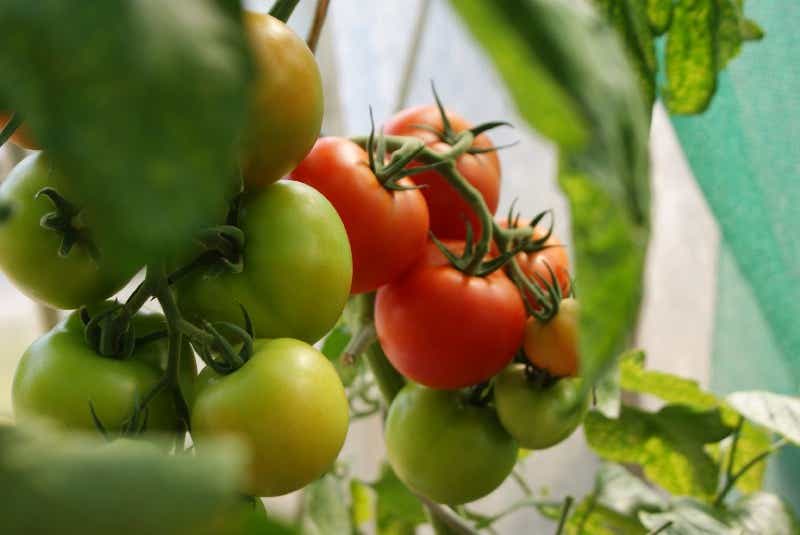Dr. Mark Hyman on how to keep the planet healthy
Wake-Up Call’s go-to health expert Dr. Mark Hyman has a new book coming out that’s all about how making healthy choices for our food can also help the health of the planet. Today, the Food Fix author shares five tips for making better food choices — and starts by explaining why it’s so important to make these changes.
Food is for nourishment, pleasure, building community and connection. It is all that — but how our food is grown, processed, distributed, and eaten has far-reaching implications for everything we care about. Whole foods grown in a way that protects the environment and climate is the key to solving most of our global problems. Our current $15 trillion global food system produces food that harms human health, killing 11 million people a year while causing staggering damage to our environment and climate.
Our industrial agricultural system is effective at producing the raw materials (corn, wheat, soy) for ultra processed food that results makes 75% of our population overweight and every other American having type 2 diabetes or pre-diabetes.
The harm doesn’t stop there. The extractive, chemical intensive agricultural system results in the following problems:
- Our food system is the #1 cause of climate change responsible for almost 50% of greenhouse gas emissions, more than our fossil fuel industry.
- Fertilizer, pesticides, herbicides and farming techniques such as tilling damage our soil, kill the organic matter in the soil needed to suck carbon from the atmosphere and have resulted in the loss of ⅓ of our topsoil. In fact 30–40% of all current greenhouse gases in the atmosphere are the result of loss of our soil. At the current rate of soil loss, the UN estimates we have only 60 harvests left before we run out of soil.
Conventional agriculture uses harmful chemicals like pesticides and synthetic fertilizers. These toxins linger in our soil, get passed into our food, and pollute waterways. They destroy biodiversity and put our health in danger (many are linked to cancer, hormone disruption, allergies, and other harmful health outcomes). They also are killing our pollinators. No pollinators means no food and no humans. A 2000 study by the USDA found that 60% of rural rivers and streams — 90% in urban areas — are contaminated with pesticides at levels high enough to harm aquatic life. It’s also estimated that 50 million Americans may have groundwater that has been contaminated with pesticides. Conventional farming practices also over-till the land and deplete soil quality and nutrient density and make it prone to erosion. They damage the nutritional quality of our food. The conventional food system is also the number one driver of climate change, which is very quickly stealing our grandchildren’s futures. Just a 2 degrees Celsius increase in global warming is our tipping point.
Changing the foods we choose to eat can change all these problems for the better. That’s why I wrote my latest book, Food Fix. Below are five better choices we can make.
Solution #1: Eat organic and regeneratively grown food.
The most powerful solution for a cleaner environment and more stable climate is to support organic and regenerative agriculture. These types of farming practices avoid the use of agricultural chemicals and rely on the symbiosis of nature — like grazing animals, rainwater, no-till practices, and cover crops — to achieve healthy soil that grows clean food. And these practices actually help the soil naturally sequester carbon, taking it out of the atmosphere. Get to know your local farmers who practice holistic farm management and grow organic; it’s an incredibly powerful but small step in improving our environment and climate.
Solution #2: Stop buying food-like products.
Sixty percent of the American diet is derived from the most widely grown conventional mono-crops — corn, soy, and wheat. These are grown in the ways I described above that harm the environment and they all largely rely on glyphosate, an herbicide linked to cancer that negatively impacts soil nutrient content, soil micro-organisms, and biodiversity in aquatic life, animals, and insects. Avoiding the processed foods made from these three crops will dramatically improve your health and help the environment at the same time.
Solution #3: Stop wasting food.
Food waste is a major contributor to climate change, as rotting food in landfills off-gases methane. The resources used to produce the food that ends up getting wasted all add up to contribute to more environmental and climate decline (think about the entire growing process, water usage, transportation, refrigeration, etc.). Starting your own compost pile at home or joining a compost service is an amazing way to help. And be more mindful from the start about how much food you need to buy and make at each meal — this really goes a long way.
Solution #4: Get involved in your community.
Teach younger generations about the impacts their food has on the environment. Teach your co-workers. Get involved in local schools, churches, community gardens, and farmers’ markets to help spread awareness about regenerative agriculture and a healthier future for food. Many people just aren’t aware.
Solutions #5: Start your own garden.
Growing our own food is powerful in so many ways. It connects you to your food on a deeper level and gives you a greater sense of ownership over your meals. It protects the environment and gives you more nutritious produce. It also saves money. It’s a win-win-win.
Follow Dr. Mark Hyman on Instagram, Twitter, and Facebook, and check out his books on Amazon or your local books retailer.
This originally appeared on Medium.com
Purchases through this link may earn us affiliate revenue.









